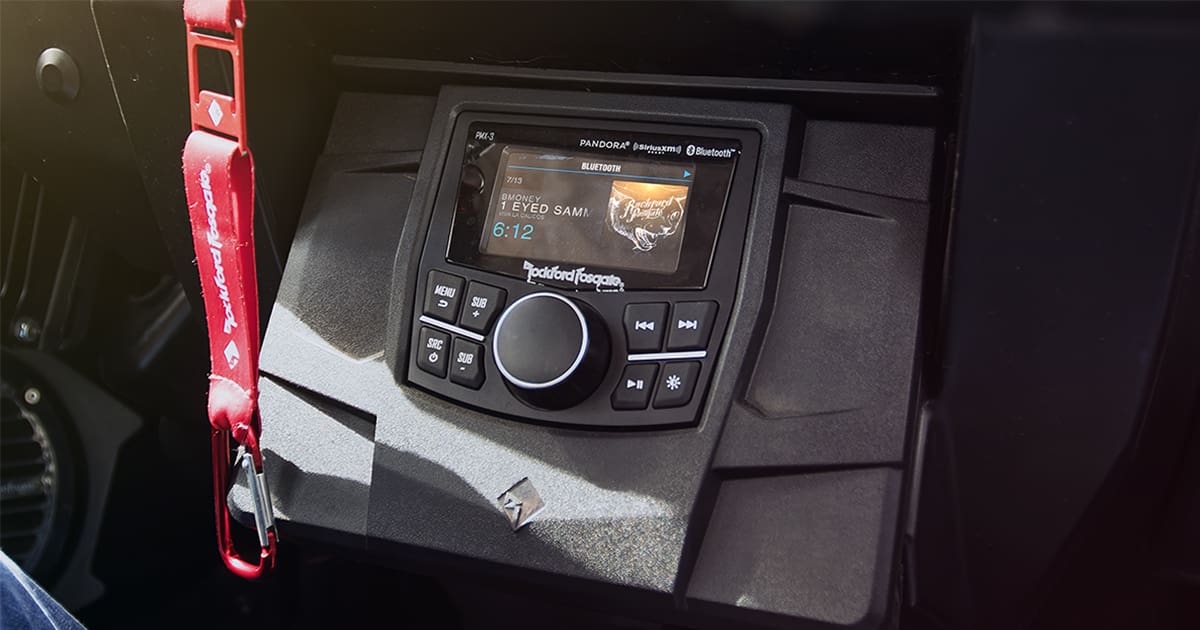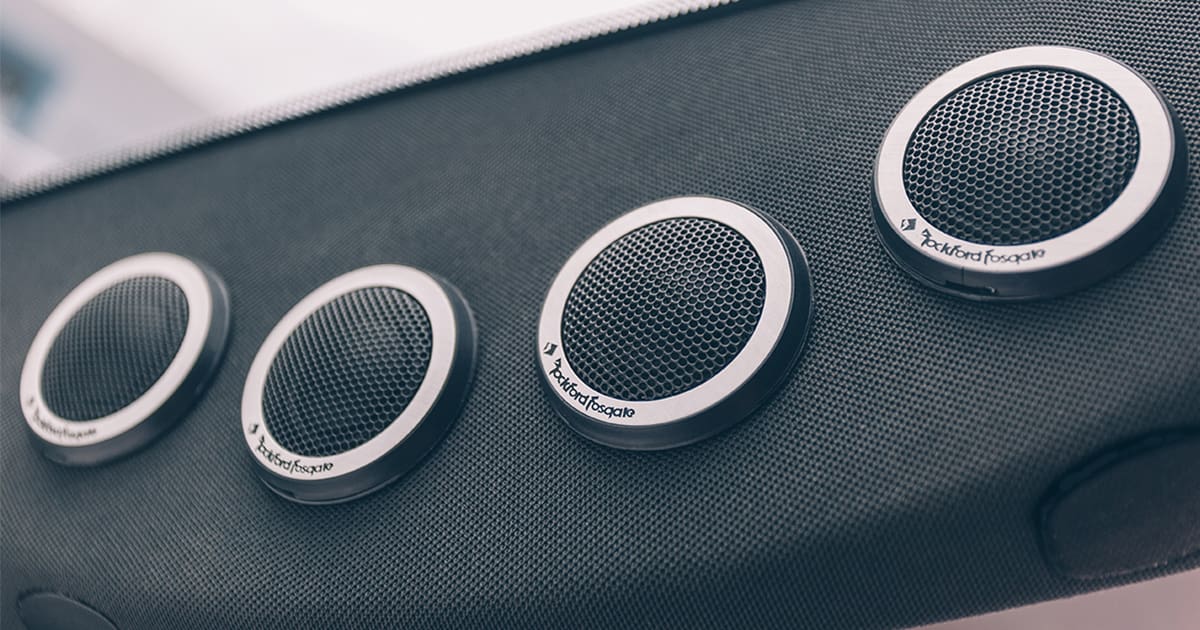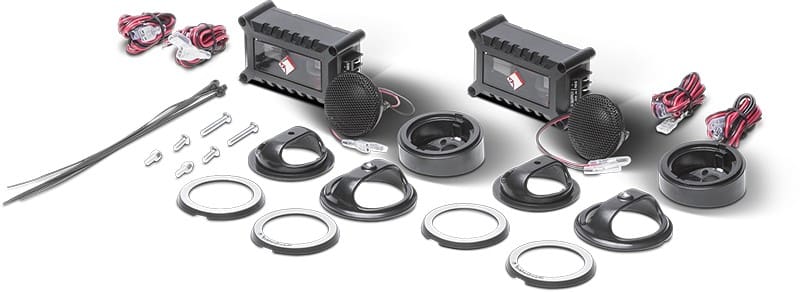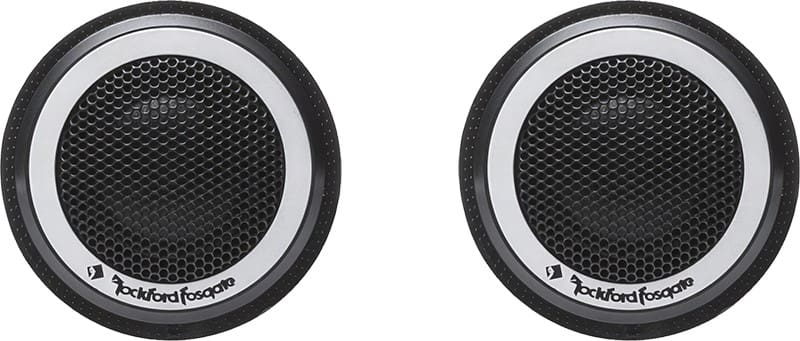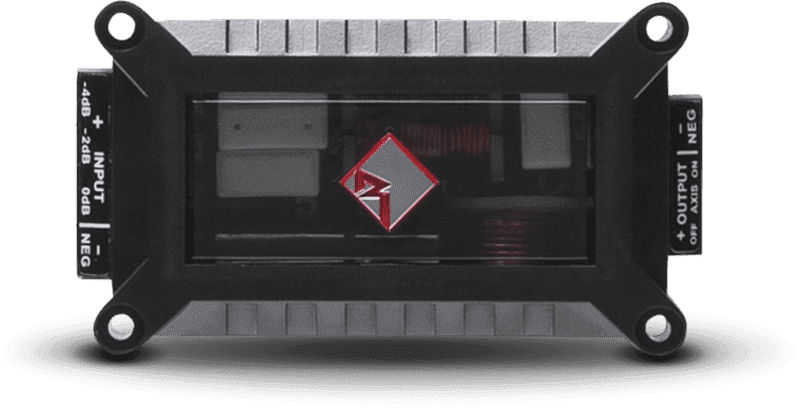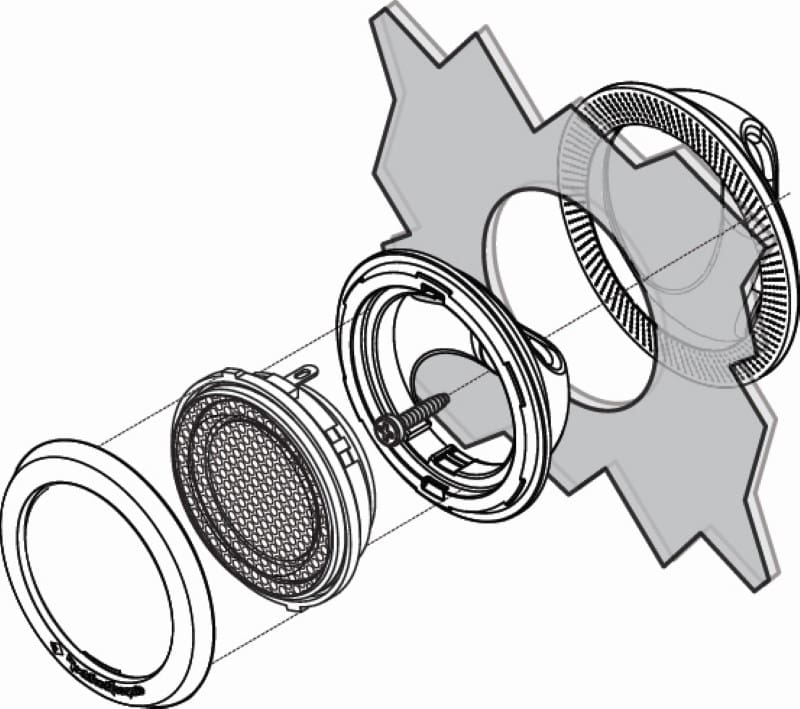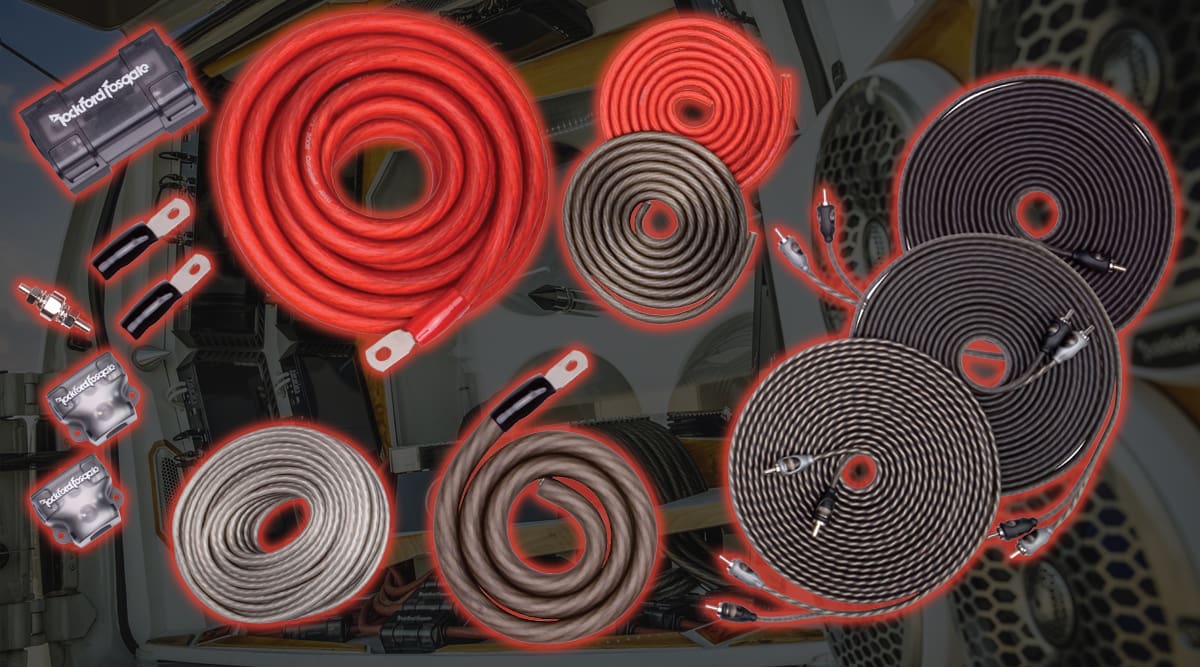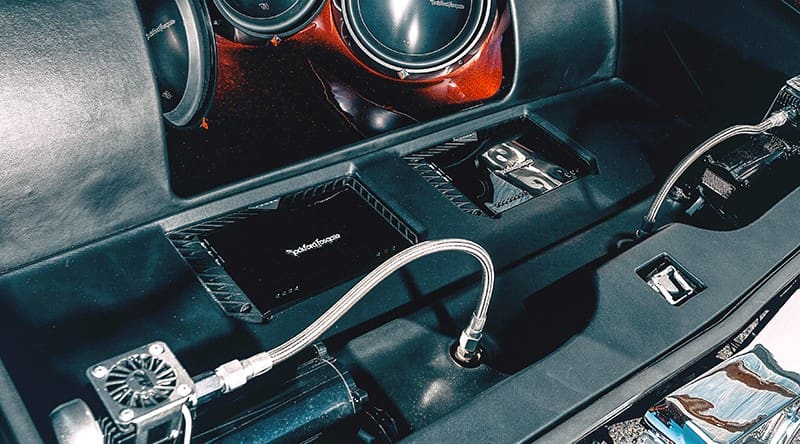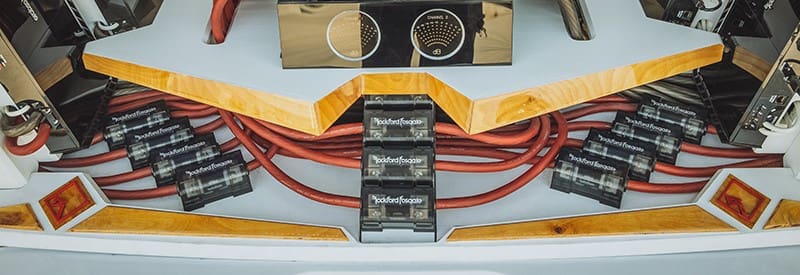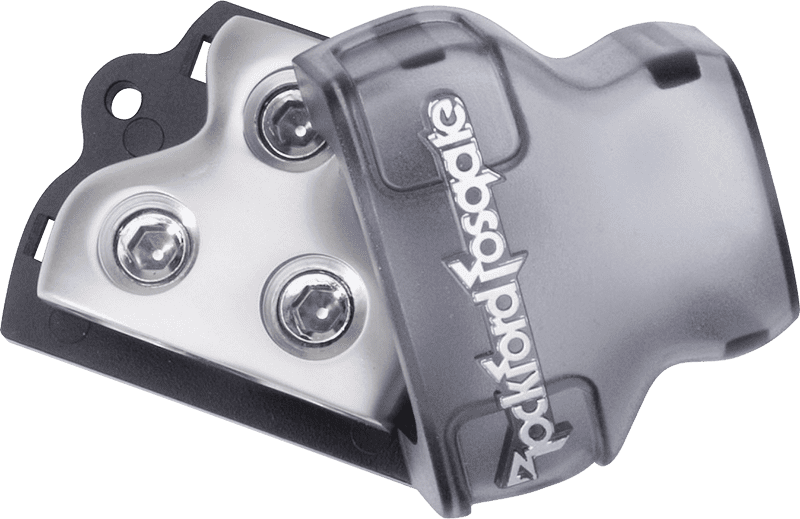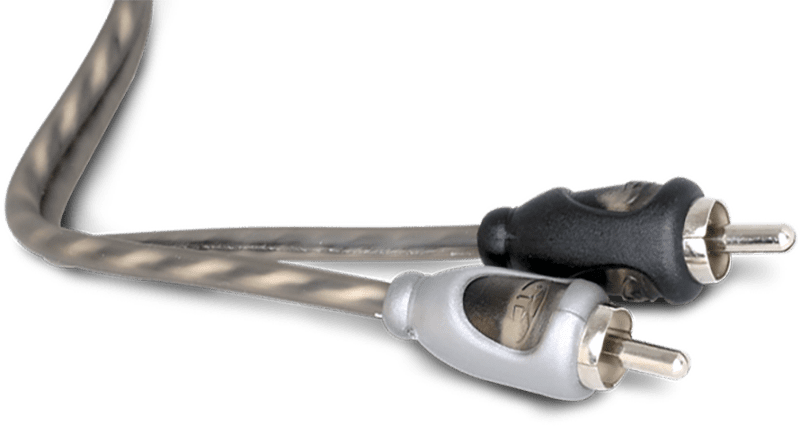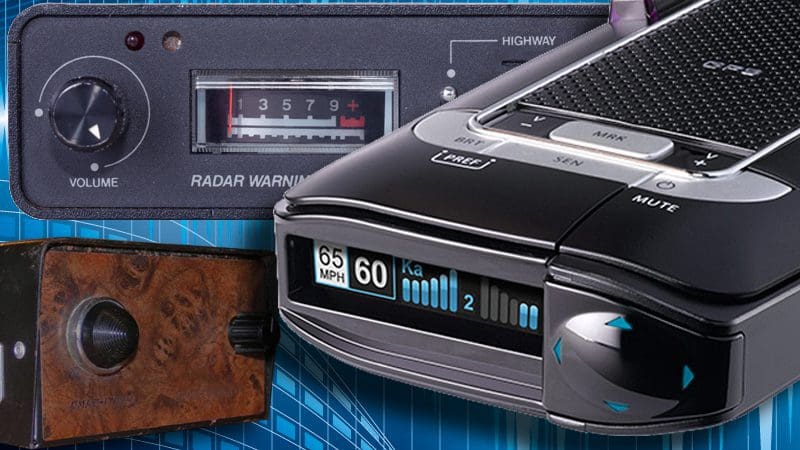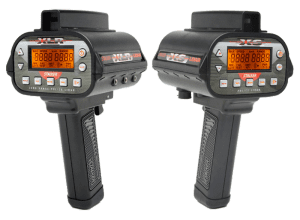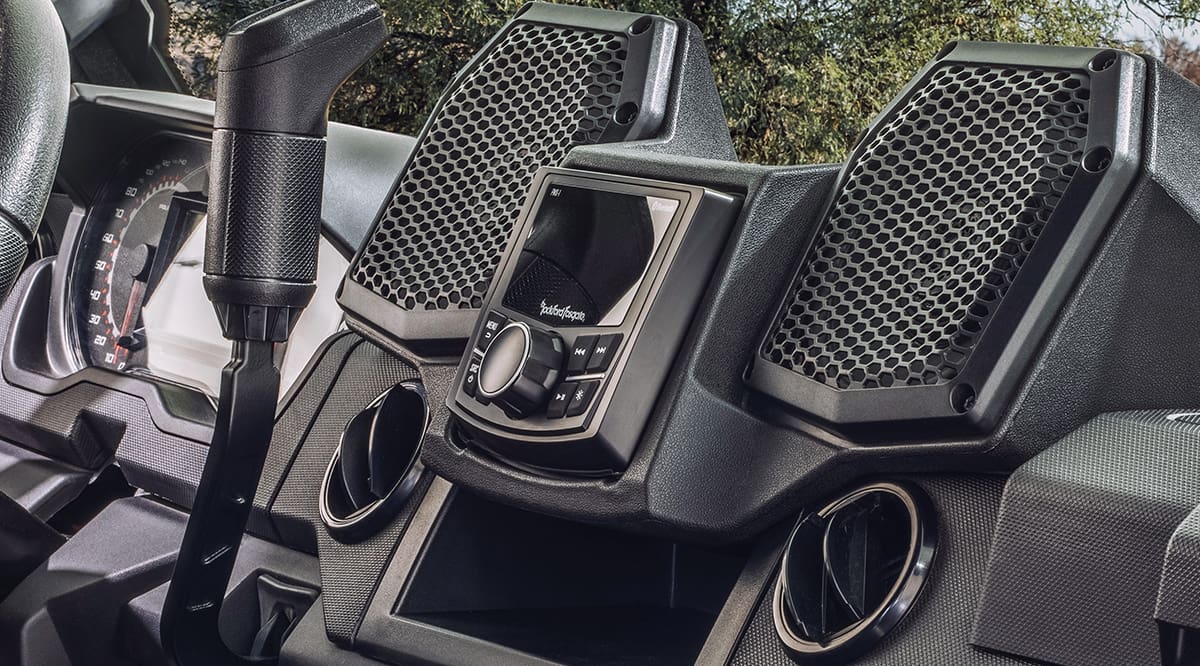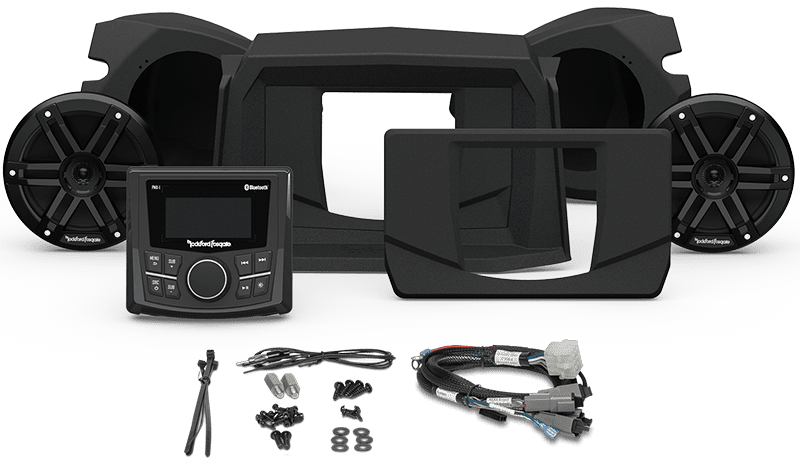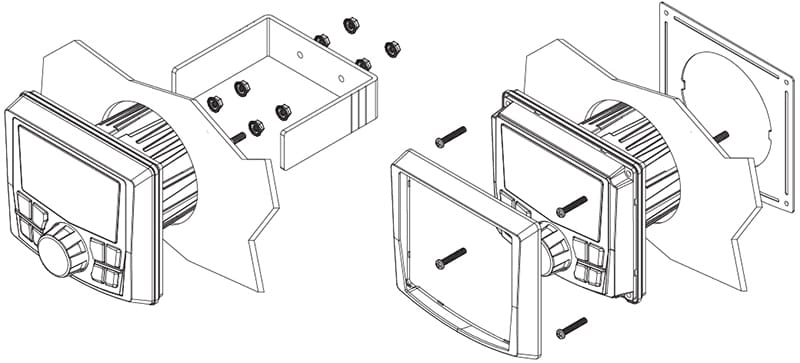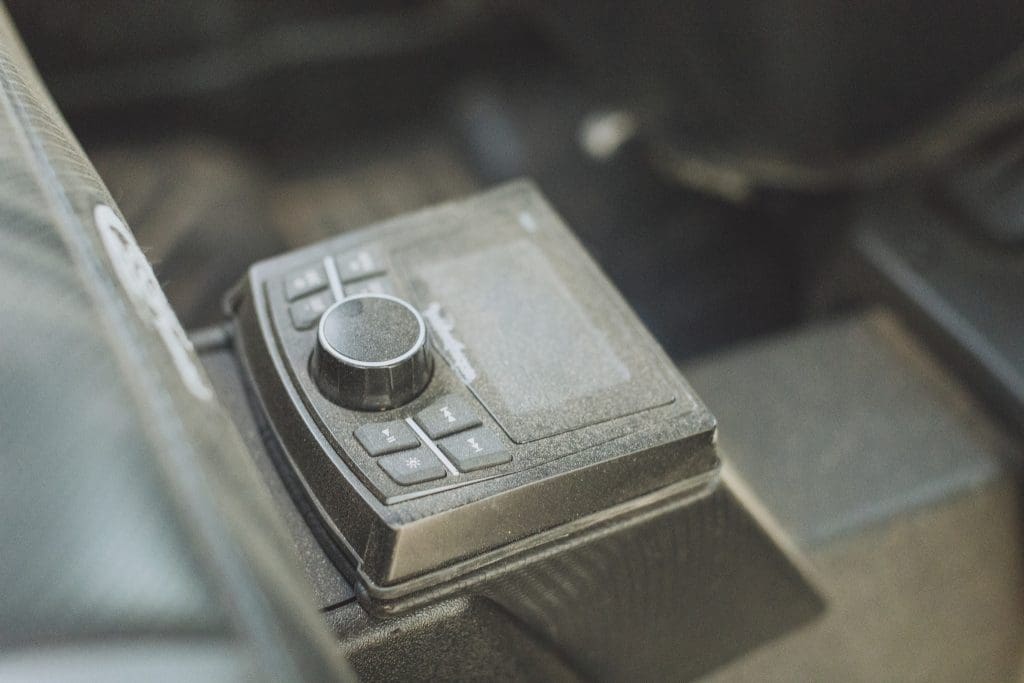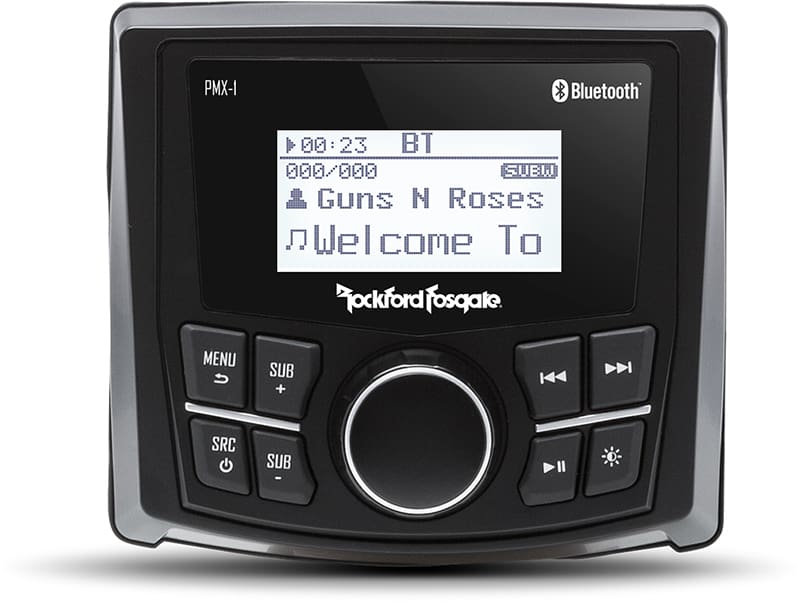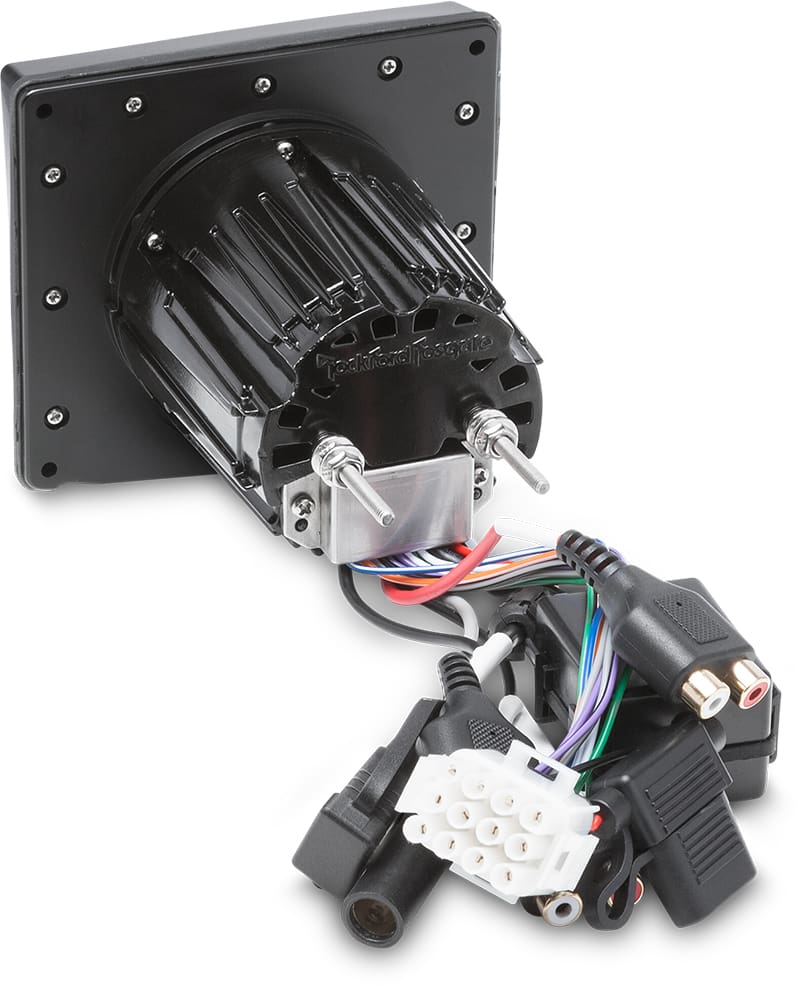When it comes to marine and powersports source units, Rockford Fosgate has a solution! We previously looked at the affordable PMX-1. In this spotlight, we will check out the Rockford Fosgate PMX-3 to see why it’s an excellent choice for your boat, side-by-side, UTV or even a custom car or hot rod. Let’s check it out!
PMX-3 Design and Construction
The PMX-3 media receiver fits into a three-inch round opening. Its square face measures 4.5 inches wide and 4.2 inches tall. The face extends 1.5 inches forward, while the chassis reaches 2.9 inches behind the mounting surface.
The PMX-3’s face includes a full-color 2.7-inch TFT display, designed for clear visibility in bright sunlight. Rockford Fosgate enhances sunlight readability by using an optical wet bonding process. A large rotary encoder with an integrated button sits at the center of the lower section, allowing adjustments for volume, zone volumes, and menu settings. Surrounding the knob are buttons for menu, source, track selection, tracking, play/pause, and subwoofer-level access.
Importantly, the radio holds an IPX6 water intrusion rating, meaning it can endure splashes or hose washes without damage. Rockford Fosgate’s Element Ready™ design also tests for salt fog exposure (ASTM B117) and accelerated UV exposure (ASTM D4329). Along with impact and vibration testing, this unit withstands the harshest abuse from both trails and Mother Nature.
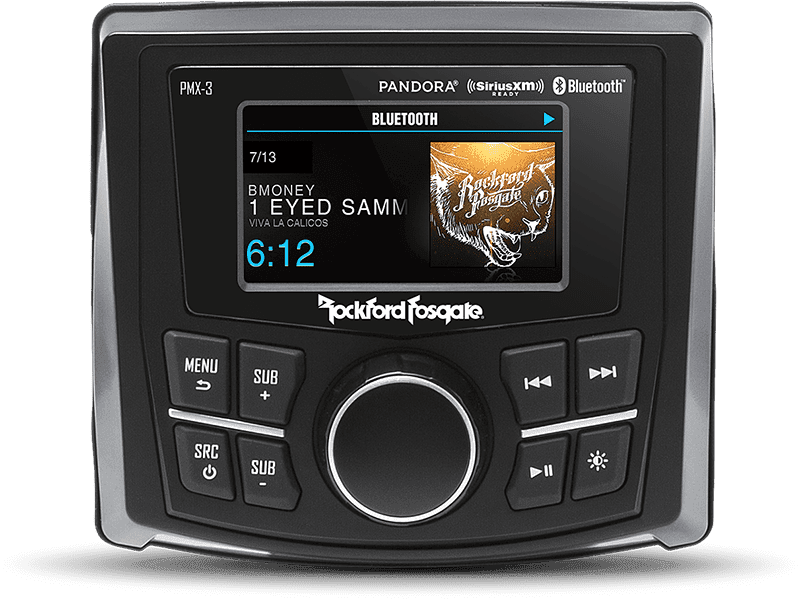
Features of the Rockford Fosgate PMX-3
The Rockford Fosgate PMX-3 is packed with of source options. First, there’s a digital AM/FM receiver with Weather band channels. The tuner includes RDS information display. A USB connection is provided on a pigtail to let you connect a memory stick up to 32GB in capacity to play MP3, WMA and FLAC files. You can also connect a smartphone to charge it at up to one amp of current. The PMX-3 includes wired USB support for Pandora on Apple devices, but Android users can use the integrated app over Bluetooth.
Wireless audio streaming over Bluetooth 3.0+EDR is built into it, so almost any mobile device can serve as the DJ. You can play music from that device, stream your favorite podcast or listen to music from Spotify, Tidal, Apple Music or YouTube Music.
Support for SiriusXM Satellite radio is included. Your installer can add an SXV300 receiver and antenna to provide uninterrupted entertainment almost anywhere in North America. The input for the SiriusXM receiver can be repurposed as an auxiliary input if you haven’t purchased a tuner module.
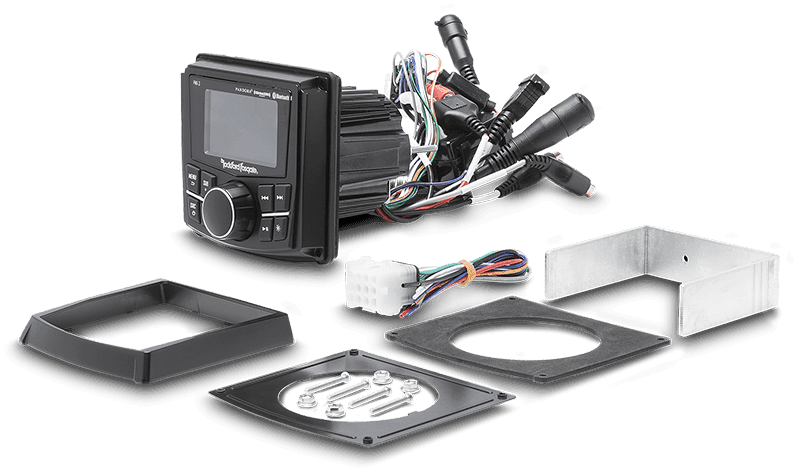
Audio and Connectivity Features
The amplifier built into the PMX-3 is rated to produce 25 watts of power into 4-ohm speakers and 50 watts of power into 2-ohm speakers. If you want more from your audio system, there are two sets of four-volt preamp RCA output jacks. These outputs can be configured as front and rear or front and subwoofer with subwoofer level control. High- and low-pass crossovers are built-in to optimize the internal amplifier or filter the preamp signals. The unit has source-specific level controls, so you can fine-tune everything to be the same volume – sweet!
A seven-band equalizer with several presets is included to let you fine-tune your audio system to your mood or listening environment. Being a Rockford Fosgate product, they’ve included a Punch EQ circuit. To give the system some extra sizzle, dial in up to 18 dB of boost at 45 Hz and 12 dB at 12.5 kHz..
Your installer can add up to two wired remote controls to the PMX-3. You could have a PMX-3 at the helm of your boat, then add a PMX-1R in the cuddy or galley. A PMX-0 on the swim platform is great when the family is playing in the water of the stern. The PMX-3 and its remotes also make a great audio solution for campers and motorhomes.
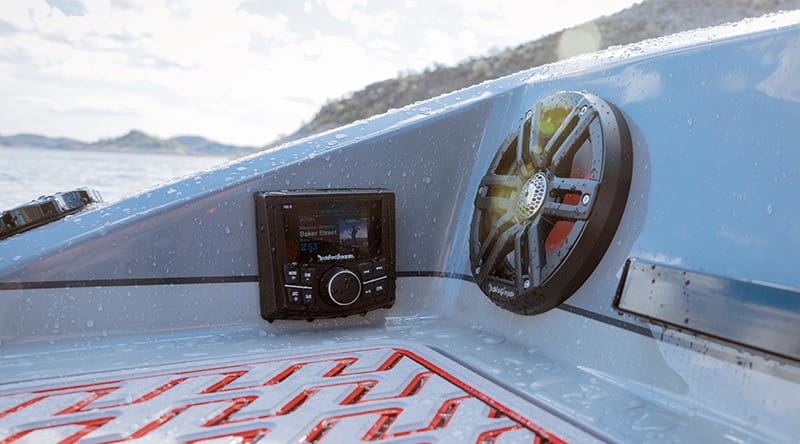
Camera Input and Power Connections
One feature you won’t find in many units in this class is camera input. If you have an ATV, a rear camera is perfect for maneuvering. The same applies to backing into your camping spot if you have a motorhome. You could even add a camera on the bow of a boat to help make docking easier. The camera input includes a reverse trigger that your installer can connect to a switch for manual activation.
The PMX-3 is commonly known as a two-wire unit. Typically, most radios have ground, power, and accessory connections, with the power connection constantly tied to the battery. The issue with this design is that even when the radio is off, it creates a small but continuous drain on the battery. If your boat or side-by-side sits unused for a week or more, this drain can deplete the battery. The PMX-3 addresses this by eliminating the need for a constant power connection, requiring only an accessory and ground connection. Additionally, the unit’s integrated flash memory stores all your audio and tuner settings, ensuring you don’t lose them when the power is off.
Speaking of batteries, the PMX-3 includes a digital voltage gauge. This allows you to monitor the electrical system voltage so you’ll always be able to start the vehicle and get home.
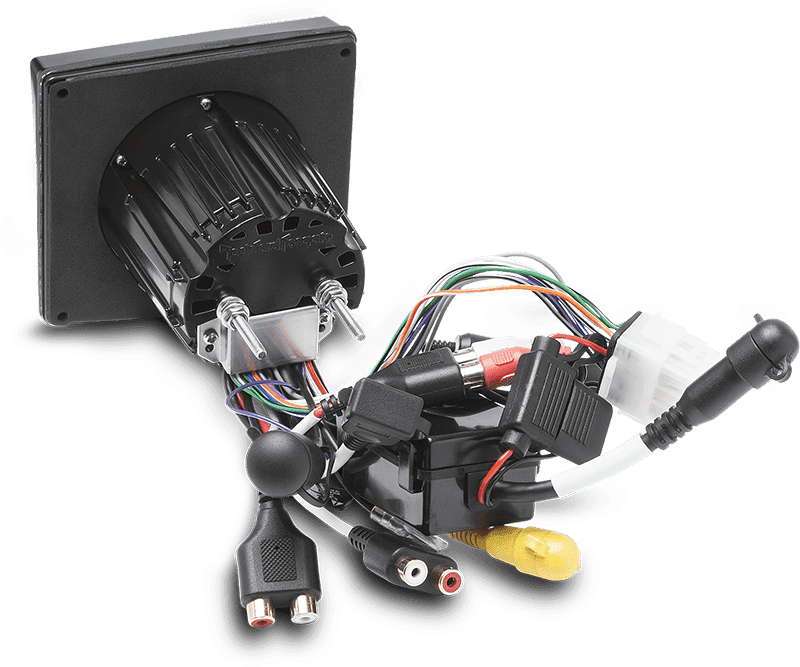
Premium Marine and Powersport Source Unit
There are many gauge-style radios on the market these days. Picking the right one isn’t easy. If you want a unit with all the premium source options, flexibility for expansion with external amplifiers and remotes, and durability that’s hard to beat, drop into your local Rockford Fosgate retailer and ask about the PMX-3. You can find a retailer near you using the locator tool on their website. Be sure to check out their Facebook, Instagram and YouTube feeds and channel to stay up to date with their latest product releases.
This article is written and produced by the team at www.BestCarAudio.com. Reproduction or use of any kind is prohibited without the express written permission of 1sixty8 media.
